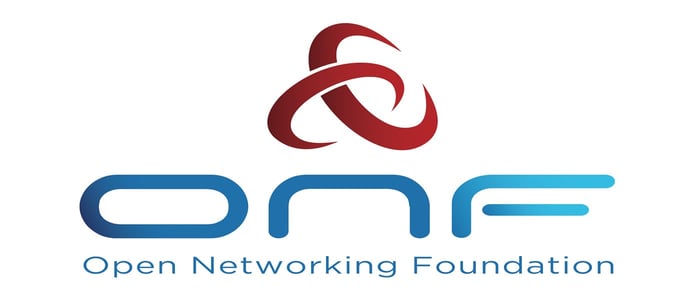
TL; DR: The Open Networking Foundation (ONF), a collaborative community-of-communities, is working to revolutionize the carrier industry through software-defined networking (SDN), network function virtualization (NFV), and cloud technology. The foundation serves as an umbrella over several projects leveraging disaggregation, white-box economics, open-source software, and software-defined solutions to drive transformation. Looking ahead, ONF plans to introduce exciting new capabilities made possible through next-generation SDN initiatives, furthering its commitment to accelerating mainstream adoption of the technology.
Open-source software has emerged victorious over proprietary solutions in many areas of computing — from content management systems and programming tools to operating systems and databases.
The technology has tremendous promise for the networking and telecom spaces as well. But, for a long time, the standards, protocols, and related technologies needed to foster a viable ecosystem for open-source networking simply didn’t exist.
The Open Networking Foundation (ONF), an operator-led consortium initially founded in 2011 as the standard-bearer for Software Defined Networking (SDN), has been working to change that by serving as the umbrella organization over several projects focused on disruptive transformation.

The operator-led ONF is transforming networks into agile platforms for service delivery.
These efforts are empowering those who build networks to reduce operational and capital expenses, accelerate innovation, and create a broader, healthier, and more competitive environment.
“ONF’s mission is to transform the telecom industry, which is quite audacious for a small organization,” said Timon Sloane, VP of Marketing and Ecosystem at ONF. “We started with a very practical approach, but we’ve also taken on a whole ecosystem of community involvement because that’s what’s needed to help move the industry forward.”
Today, under the leadership of an international team of operator partners, including AT&T, China Unicom, Comcast, Deutsche Telekom, Google, NTT Group, and Turk Telekom, the California-based consortium is building an end-to-end open innovation pipeline designed to benefit the industry as a whole.
The community is currently leveraging disaggregation, white-box economics, open-source software, and software-defined solutions to drive transformation. With plans to introduce exciting new capabilities made possible through next-generation SDN initiatives, ONF is furthering its commitment to playing a significant role in the next wave of networking technology.
An Operator-Led Consortium Leveraging SDN, NFV, and Cloud Technology
ONF has had a significant and increasing impact on the networking space. It was initially formed to take research from Stanford University and UC Berkeley that enabled network controls to be directly programmable to the market.
In 2012, ONF established the first SDN standard, known as OpenFlow. The communications protocol provides access to network plane elements that are used to determine the path of packets across switches.
At approximately the same time, SDN inventors and leaders from Stanford and Berkeley formed a nonprofit organization known as ON.Lab. The organization established open-source communities intended to develop the tools and platforms necessary to realize the full potential of SDN, network function virtualization (NFV), and cloud technologies.

ONF is a rapidly expanding community of operators, vendors, and systems integrators, among other stakeholders.
“Over time, the two organizations began to merge, until they announced in October 2016 that they would become a single organization under the ONF name,” Timon said. “That was the foundation of the SDN movement, which has grown tremendously over time.”
In 2018, ONF released a strategic plan to transition into the latest phase of industry transformation in close collaboration with supply chain partners — including silicon vendors, OEMs, virtualized network function (VNF) vendors, system integrators, platform software vendors, and white-box (unbranded) server suppliers.
These partners now have the opportunity to collaborate with ONF’s Technical Leadership Team (TLT), participate in reference design teams, and secure a place at the forefront of the solutions operators plan to deploy.
An Ecosystem of Companies Collaborating to Deploy Innovative Solutions
Timon told us that ONF’s operator partners develop Reference Designs (RDs), which are essentially blueprints of the components required to build a deployable platform that addresses the needs of each operator.
The Trellis RD, for example, is an open-source, SDN-based switching fabric that supports edge cloud and NVF applications as well as distributed access-and-edge networks. The technology leverages ONF’s ONOS controller, white-box switches, and the OpenFlow protocol to create a cost-efficient, resilient, and scalable networking fabric.
In September, ONF announced that Comcast had successfully deployed Trellis in multiple markets as a central and essential part of its Distributed Access Architecture (DAA) buildout.
“This has been a multiple-year journey, from design to extensive field trials and finally to production rollout, and we’re impressed with the results and the advantages that open-source and Trellis are delivering for us as we upgrade our access network,” Elad Nafshi, Senior Vice President, Next Generation Access Networks at Comcast, stated in a press release at the time.
Timon said that the event marked a significant milestone for ONF and the industry at large in that it empowered an operator to deploy at scale. The process also established a formula for an operator, ONF, and a group of commercial entities to jointly build and support a deployment.
“We worked with Comcast and the industry to help form an ecosystem of about eight companies working together to make this open-source solution deployable,” he said. “It’s a fascinating new model in which multiple parties benefit from a common purpose.”
Innovation Via a Unique, Curated Open-Source Dynamic
A board of operators from Deutsche Telekom Technik, AT&T, China Unicom, Comcast, Edgecore Networks, NTT Communications, Stanford University, Google, and Turk Telekom is responsible for leading ONF.
“They really drive the direction, which works, because they ultimately know what they want and then commit to consuming the final product, instead of having multiple companies developing things in a common space but only a small set of winners — leading to wasted time and expense,” Timon said.
ONF’s curated open-source model empowers operators to come together with a shared end goal, create common components and platforms, attract supplier partners, and, ultimately, gain broad community interest.
“With this model, we have the energy, resources, and operator backing to lay out a vision and drive toward it, rather than a Wild West approach where it’s wide open and whoever invests the most can guide where it goes,” Timon said. “We’ve seen this elsewhere, and it can slow open-source development when incumbents don’t have the motivation to spur transformation.”
The organization’s leadership structure also provides a unique avenue for companies of all sizes to work more closely with operators than ever before. This provides vendors an opportunity to collaborate with top executives multiple times a year, which Timon said is fundamental to the company’s working model. “It’s a level of collaboration with operators — our ultimate customers — that is essentially unavailable elsewhere,” he said.
Up Next: New Capabilities Through Next-Gen SDN Initiatives
Ever-focused on innovation, ONF is marching toward the future with Next-Gen SDN, an initiative based on the P4 programming language. In September, the consortium announced the release of the Stratum project, which will form the foundation for the Next-Gen SDN, under the Apache 2.0 open-source license.
Stratum, an open-source, silicon-independent switch operating system for SDNs, frees users from vendor lock-in found on data planes with proprietary silicon interfaces and closed-source software APIs.
“We are opening up this tremendous capability to application developers, and we believe that, in the years to come, we’re going to see changes that we haven’t yet envisioned,” Timon said. “Stratum is the first step in this transformational journey.”
HostingAdvice.com is a free online resource that offers valuable content and comparison services to users. To keep this resource 100% free, we receive compensation from many of the offers listed on the site. Along with key review factors, this compensation may impact how and where products appear across the site (including, for example, the order in which they appear). HostingAdvice.com does not include the entire universe of available offers. Editorial opinions expressed on the site are strictly our own and are not provided, endorsed, or approved by advertisers.
Our site is committed to publishing independent, accurate content guided by strict editorial guidelines. Before articles and reviews are published on our site, they undergo a thorough review process performed by a team of independent editors and subject-matter experts to ensure the content’s accuracy, timeliness, and impartiality. Our editorial team is separate and independent of our site’s advertisers, and the opinions they express on our site are their own. To read more about our team members and their editorial backgrounds, please visit our site’s About page.

